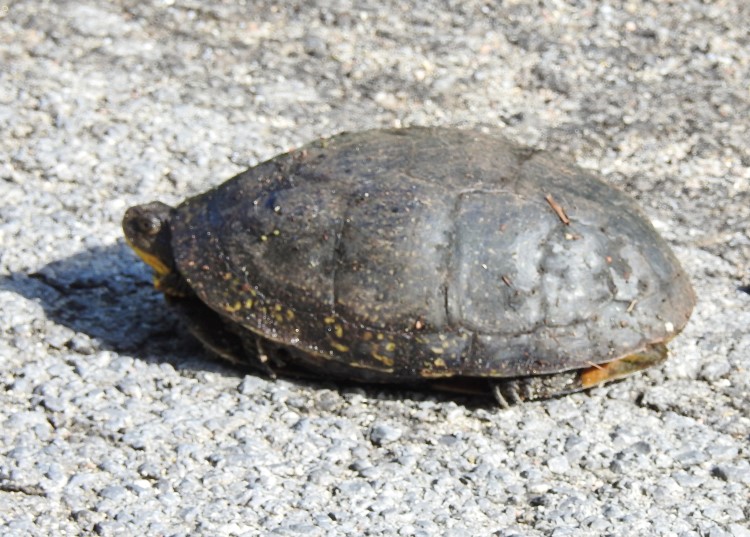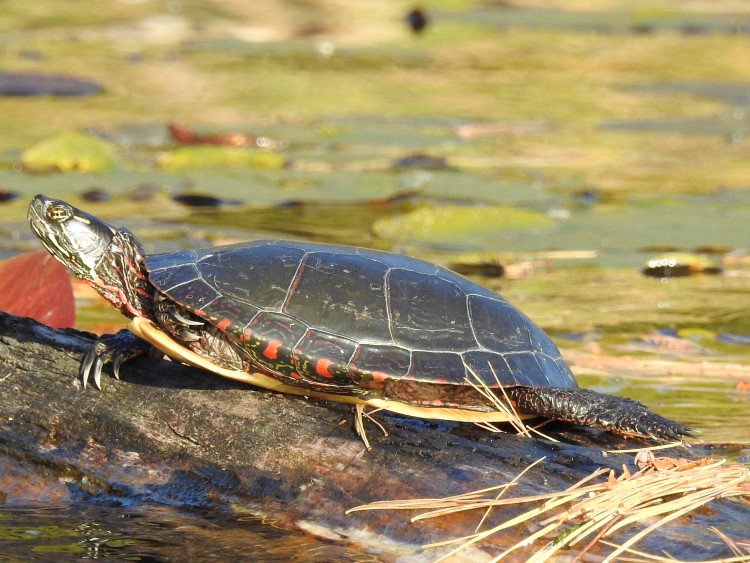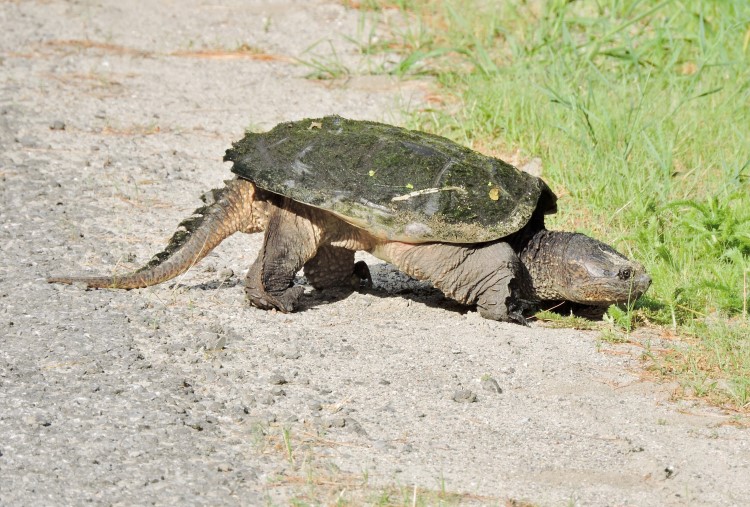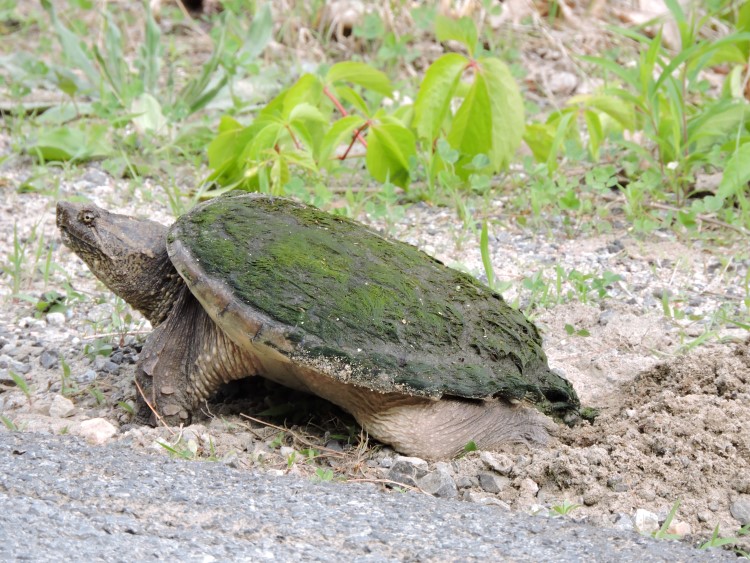
“Turtles, turtles, rah, rah, rah … mmm, we love turtles!” Yes, we do love the chocolate, caramel and pecan candy, but we also love to focus on the turtles living at the lake.
We enjoy spotting and photographing reptiles. The order Reptilia includes the lizards, snakes, and turtles at the cottage but in this article we will focus on the turtles. Uniquely, turtles are the only vertebrates we find today that have a shell, a protective covering made of enlarged scales (termed scutes). The top shell, called the carapace, is fused to the turtle’s backbone; the bottom shell is called the plastron. The legs, tail, and head of the turtle can be retracted into or under the edge of the shell when the animal feels threatened. Similar to other reptiles, turtles are cold-blooded, hibernate in winter, and lay eggs.
We have been fortunate to observe and photograph three species of turtles at White Lake. Two of these species spend most of their time in and under the water. This behaviour presents challenges to the would-be photographer. Only on one occasion have we seen and photographed a Blanding’s turtle (Emydoidea blandingii) but we frequently observe painted turtles (Chrysemys picta). Both the Blanding’s and painted turtles are members of the pond and marsh turtle family (Emydidae). The third species we have seen at the cottage is the snapping turtle (Chelydra serpentine) which is the only member of the snapping turtle family (Chelydridae) found in Ontario.
The Blanding’s turtle has a distinctive high-dome-shaped shell which can grow to 20 centimetres in length. This shell shape makes them poor swimmers so they typically move around by walking on the bottom of shallow marshes and lakes. The carapace is blackish-coloured with numerous, small yellow specks. The head, legs and tail are dark while the undersides of the head and neck are yellow. The plastron of adults is yellow with black patches but almost completely black in juveniles. These turtles spend most of their time in shallow water where they feed on aquatic insects and vegetation as well as molluscs and crustaceans. They overwinter at the bottom of these marshes and lakes. Blanding’s turtles usually do not travel far from the water, except to nest. The turtle pictured below was seen on the road near our cottage (not far from the water and appropriately near a turtle crossing road sign). We carried it to the shoulder of the road, in the direction it was headed, so it could get on with digging a nest and laying its six to 11 eggs that hatch in late summer.
We see many painted turtles while out paddling at White Lake either basking in the sun on floating logs or with their heads protruding from the water as they come up to breath. Their shells can grow to 15 centimetres in length. The carapace and skin are dark green with numerous yellow, orange and red markings while the plastron is yellow with dark central markings. They prefer ponds, streams or shallow areas and marshes in lakes with abundant aquatic plants and floating logs for sunning. They feed on aquatic insects, plants, algae, leeches and snails. They help to control algae, leech and insect populations, and overwinter in the mud in areas where the water does not freeze to the bottom. Females build their nests in sandy or gravely soil, such as the shoulders of roads, where they can lay four to 23 eggs. Young painted turtles usually overwinter in the nest, finding their way to the water in spring. Painted turtles are the most widespread species of turtle in Ontario and are most often spotted sunning on floating logs.
We wrote about the snapping turtle in our first ‘What Is That’ article published here in the Millstone on January 3, 2016 and so will not repeat the information we provided there. But it is only during the last two springs that we have been at the cottage at the right time to observe the females searching for sites and laying their eggs along the roadside near the cottage. The following pictures are from 2016.
Two excellent sources of information on turtles are The ROM Field Guide to Amphibians and Reptiles of Ontario and the Canadian Wildlife Federation’s Shorelines…a festival of life.







